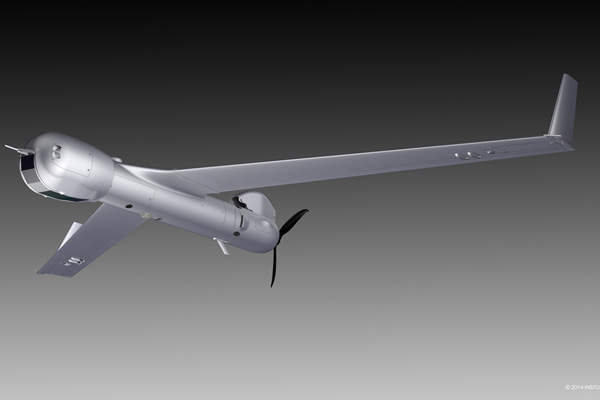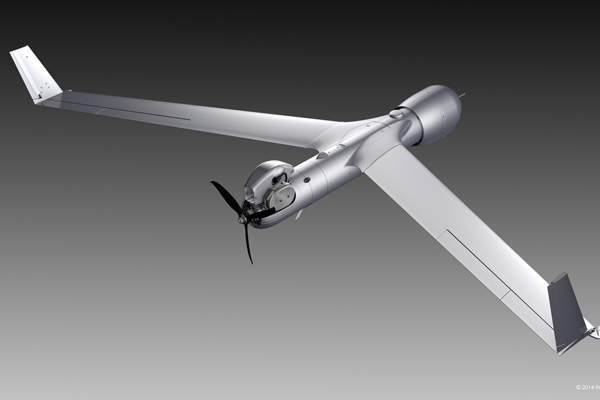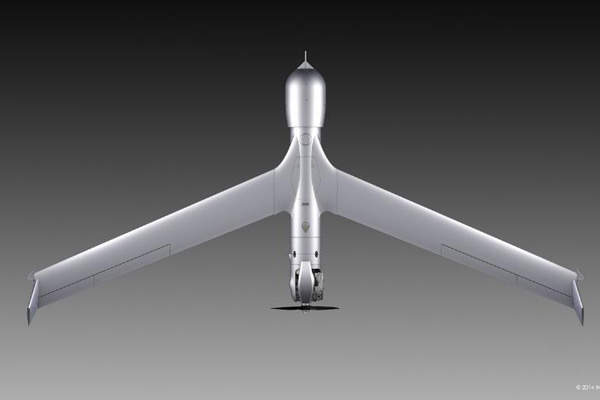ScanEagle 2 is a small unmanned aircraft system (SUAS) designed and manufactured by US-based unmanned aerial vehicle (UAV) manufacturer Insitu, a wholly-owned subsidiary of The Boeing Company.
ScanEagle 2 is a more efficient and reliable drone compared to the earlier versions of the ScanEagle family. It provides constant intelligence (both day and night), surveillance and reconnaissance (ISR), even in most extreme conditions. The aircraft can be deployed from land and waterborne platforms for both civilian and military operations.
ScanEagle 2 was officially launched at the Euronaval Exhibition and Conference 2014 held in Paris, France.
ScanEagle 2 UAS design and features
AR4 Light Ray is a fixed-wing mini unmanned aerial system (UAS) designed and manufactured by Portuguese company Tekever Autonomous Systems, to support multiple missions of small tactical military units as well as search-and-rescue (SAR) teams.
ScanEagle 2, unlike the earlier versions, has the payload holder at the front. Designed with an Ethernet-based architecture, the UAS delivers more payload power and supports more advanced payloads.
The purpose-built propulsion system, complemented by extended payload options and rapid payload integration, offers optimised performance. The fact that it shares many traits with earlier versions ensures cost-effective training and maintenance.
ScanEagle 2 is equipped with a fully digital video system for improved image quality. The UAS offers reduced Electronic Magnetic Interference (EMI) environment allowing the integration of electronically-sensitive payloads. Its robust navigational system further enhances the operational capability, safety and reliability.
The UAV measures 1.71m in length and has a wingspan of 3.11m. It has an empty weight of 19kg, take-off weight of 23.5kg and maximum payload carrying capacity of 3.5kg.
Engine and propulsion
The ScanEagle 2 is powered by heavy fuel (JP-5 or JP-8) engine designed and developed by Orbital Corporation. It is the first reciprocating internal combustion propulsion system specifically designed for small UAS. The customised engine increases reliability of the mission and reduces life-cycle costs.
Orbital, which has been working with Insitu since January 2013, delivered the first propulsion system in September 2014. The propulsion system incorporates a new Argon Engine Control Unit (ECU) and control system. It also offers real-time monitoring and diagnosis of all vital systems, sensor and actuator redundancy, as well as extensive black box recording capabilities.
Orbital’s patented FlexDITM direct fuel injection technology enables optimum engine performance and extends the range of the aircraft in flight.
The UAV offers on-board power ranging from 100W to 150W for payload based on the engine type.
Performance
The ScanEagle 2 unmanned aerial system has a cruising speed of 80kt (148km/h), while the maximum operating altitude of the UAS is 19,500ft (5,950m). The UAS can endure airborne for more than 16 hours.
ScanEagle 2 launch and recovery platforms
The ScanEagle 2 UAS is compatible with Mark 4 and Compact Mark4 launch platforms. Mark 4 launcher also works well with all other unmanned aircraft developed by Insitu. It can tolerate extreme conditions and can be used on rugged terrains. Its design also enables runway-free operation with less manpower, which makes it a cost-effective solution.
Compact Mark 4 launcher is based on a cross-compatible platform design and can be used on hard surfaces and in maritime environment. The small-foot print of the launcher makes it ideal for multi-mission operations.
ScanEagle 2 can be recovered using Skyhook recovery system, which is also compatible with all the other UAVs developed by Insitu. The compact recovery system improves the mission flexibility and reduces operational foot print, while offering cost savings for the users.
Ground control station
ScanEagle 2 is controlled by a well-equipped ground control station known as Common Open-mission Management Command and Control (ICOMC2). Multiple unmanned systems can be simultaneously managed by a single operation from the control station.
The ICOMC2 can be easily managed from a laptop or from a device worn by a soldier. It can also be scaled up to operate on large screens for displaying an integrated picture of the area of operation. A fully supported Software Development Kit (SDK) enables customisation of the ICOMC2 system to fit the operational needs and system requirements.





